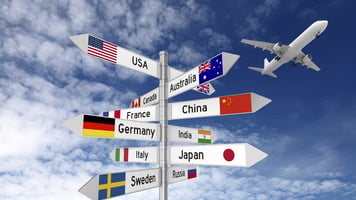If you're a tourism leader, marketer, or small business owner, you're standing at the edge of a...
5 Destination Marketing Campaigns Worth Exploring
As destinations compete for attention in an increasingly crowded marketplace, some stand out by weaving storytelling, culture, and strategy into campaigns that resonate deeply with travelers. Below, I’ve highlighted five destination marketing campaigns that are worth exploring whether you’re looking for inspiration, benchmarking, or simply curious about how leading DMOs are driving growth.
Visit Greenland – Harnessing Authentic Adventure
Visit Greenland has consistently positioned the destination as the ultimate frontier for authentic, off-the-beaten-path adventure. Their campaigns tap into the rising demand for immersive, regenerative travel by showcasing not just landscapes, but the rhythm of life in Greenland, local guides, traditional practices, and the human connection that grounds the experience.
Why it works:
-
Emphasis on storytelling rather than just scenic beauty.
-
Strong alignment with sustainability and cultural authenticity.
-
Appeals to high-value explorers seeking rare experiences.
For destinations trying to attract a smaller volume of high-spend travelers, this model offers a blueprint.
Ireland Unrushed 2025: Slowing Down Tourism
Ireland’s upcoming “Ireland Unrushed 2025” campaign is a bold move to reset visitor expectations. In a world addicted to fast itineraries and “see it all” travel, this campaign invites visitors to embrace slow tourism with longer stays, deeper connections, and a more sustainable pace.
Why it works:
-
Flips the script on traditional marketing that emphasizes checklists and highlights.
-
Reinforces Ireland’s cultural assets, pub life, folklore, and landscape immersion.
-
Strategically tied to dispersal, reducing pressure on high-traffic sites like Dublin and the Cliffs of Moher.
It’s an excellent case study in shifting demand toward responsible tourism without losing mass appeal.
Come and Say G’day: Tourism Australia
Tourism Australia revived global attention with “Come and Say G’day”, a playful campaign featuring Ruby the CGI kangaroo. By blending iconic Australian imagery with a global call-to-action, the campaign reaches broad audiences without losing cultural depth.
Why it works:
-
Combines digital storytelling (animated character) with cinematic quality.
-
Globally scalable yet unmistakably tied to Australia’s identity.
-
Positions the country as both approachable and bucket-list-worthy.
For marketers, this is a reminder that leaning into creativity and brand mascots can spark international conversation while remaining relatable.
Contrasts: Visit Jamaica
Visit Jamaica’s “Contrasts” campaign highlights the diversity of experiences beyond the stereotypical sun-and-sand narrative. By juxtaposing reggae culture with luxury experiences, Blue Mountain coffee with white sand beaches, the campaign expands the audience lens of who Jamaica is for.
Why it works:
-
Breaks out of one-dimensional positioning.
-
Creates space for new traveler segments: wellness seekers, cultural travelers, luxury explorers.
-
Strong creative execution in visuals and messaging.
For destinations struggling with perception gaps, this type of campaign demonstrates how to broad
Destination BC: Wild Within / Find Yourself
Destination BC has consistently delivered campaigns that balance adventure with accessibility. Their long-running “The Wild Within” and the more recent “Find Yourself” showcase British Columbia’s vast wilderness while framing it as an antidote to modern-day busyness.
Why it works:
-
Strong emotional storytelling that connects to traveler aspirations.
-
Seamless use of multimedia, from cinematic video to social activations.
-
Reinforces brand values of sustainability, Indigenous culture, and wellness.
BC’s work is a masterclass in maintaining brand consistency while refreshing campaigns to keep them relevant year after year.
These campaigns work because they do more than promote a destination, they sell a mindset, an identity, and a reason to connect. Whether through slow travel, contrasts, or creative mascots, each of these examples proves that growth comes from clarity of positioning and the courage to tell stories that matter.
-2.png?width=512&height=512&name=KC%20GROWTH%20PARTNERS%20(1)-2.png)


-1.png?height=200&name=Which%20Adventure%20is%20Right%20for%20You%20(2)-1.png)